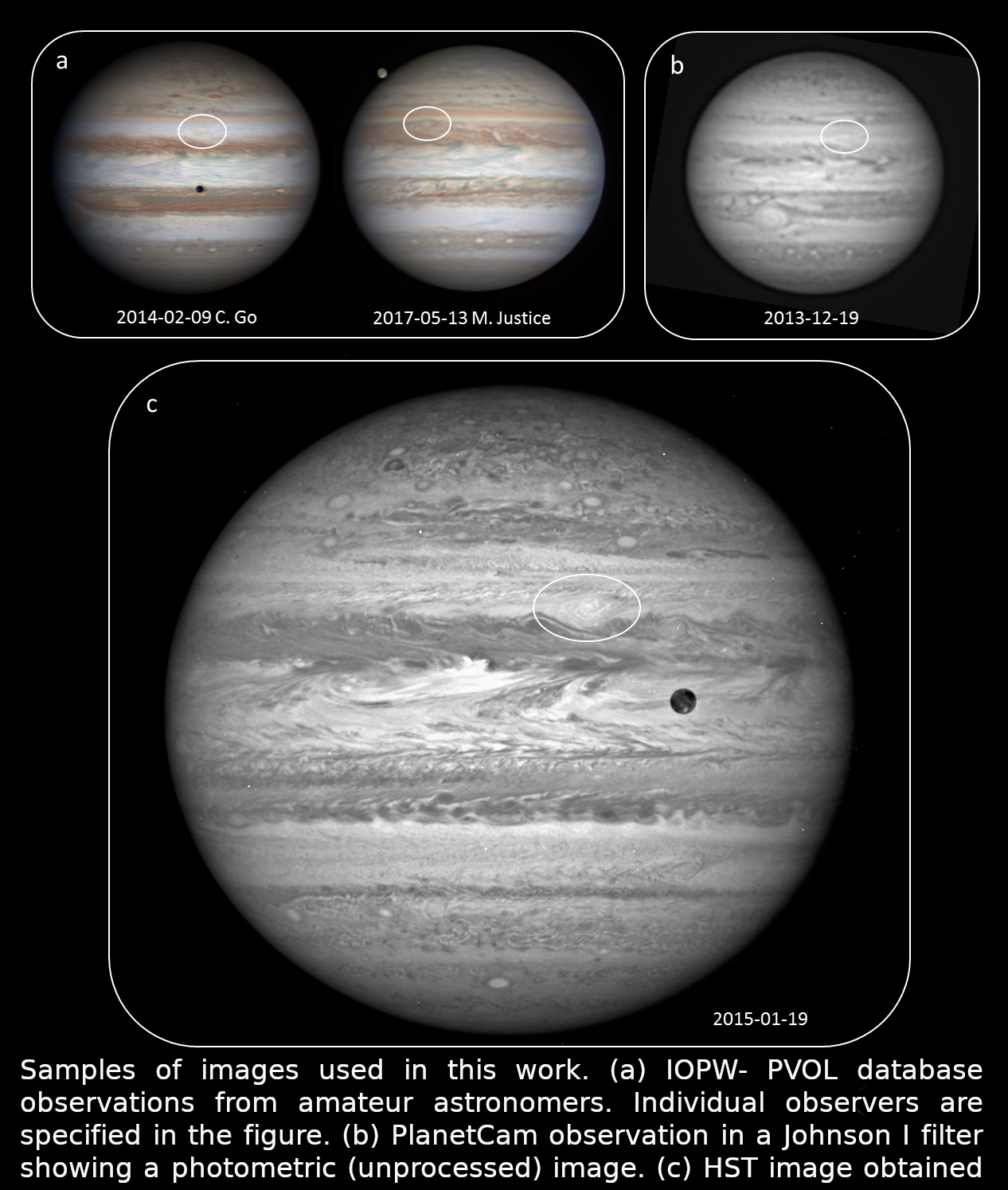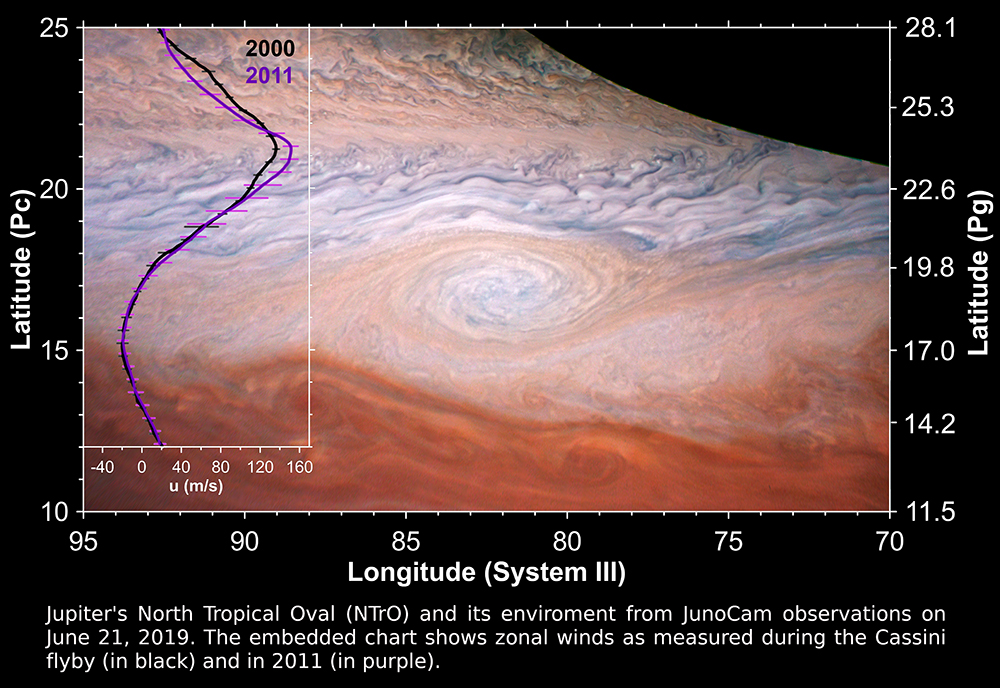Temporal evolution of the NTrO, the third largest oval on Jupiter
- 1UPV/EHU, Escuela de Ingeniería de Bilbao, Fisica Aplicada I, Bilbao, Spain (naiara.barrado@ehu.es)
- 2UPV/EHU, Escuela de Ingeniería de Bilbao, Ingeniería de Sistemas y Automática, Bilbao, Spain
- 3Science Group, Pamplona Planetarium, Spain
Jupiter’s atmosphere holds a large variety of vortices. In the transition region between the North Equatorial Band (NEBn) and North Tropical Zone (NTrZ) there are convective storms, cyclones and anticyclones at nearby latitudes and atmospheric waves. In this complex region there is a large anticyclone the North Tropical Oval (NTrO) located at 19ºN planetographic latitude that persists since at least 2006 and it is one of the longest-lived anticyclonic ovals in the planet, following the Great Red Spot and oval BA.
The NTrO has endured a complex dynamic history. It experienced one major merger with other oval in February 2013. It has also suffered color changes, with a change from white to red in September 2013 and then, in December 2014, back to white, but with a remaining external red ring. Moreover, it has survived major disturbances of the region. A North Temperate Belt Disturbance (NTBd) occurred in October 2016, which fully covered the oval, leaving it undistinguishable for months. When it reappeared, it was at the expected longitude from its previous longitudinal tracking with a similar appearance, a white large oval and same color and morphology from 2017 to 2021. It also survived the NTB disturbances that occurred in 2012 and 2020. In 2020 the region shows several other ovals in the vicinity so observations in 2021 will probably be able to show interactions between the NTrO and these new ovals.
To describe the historic evolution of this anticyclone we use JunoCam, Hubble Space Telescope (HST), IOPW database and PlanetCam-UPV/EHU multi-wavelength observations. We have retrieved a very complete track of the oval with major changes in its drift rate in specific periods of time. JunoCam and HST images have been used to measure its size and internal rotation obtaining a mean value of (10,500±1,000) x (5,800±600) km for the size and a mean relative vorticity of -(2±1)·10-5s-1. While GRS and BA have higher vorticity values than their environments, the NTrO’s vorticity is nearly the same as the ambient vorticity of its surroundings. This may suggest that this oval is probably sustained by the zonal jets confining it.

Using HST and PlanetCam observations, we have characterized its color changes measuring the color and altitude-opacity indices. The results obtained for these indices show that the oval is higher and has redder clouds than its environment but has lower cloud tops than other large ovals like the GRS, and it is less red than the GRS and oval BA.
Despite the external changes, including mergers and planetary-scale disturbances, and internal ones, in the form of morphology, altitude and color changes, none of them destroyed the vortex. The main characteristics of the oval remain unaltered. The drift rate and vorticity are visibly connected to its latitudinal location. The stability of the vortex to all the different changes of the area and its latitudinal changes suggest that the vortex is sustained by the atmosphere at levels much deeper than the observable cloud level.

How to cite: Barrado-Izagirre, N., Legarreta, J., Sánchez-Lavega, A., Pérez-Hoyos, S., Hueso, R., Iñurrigarro, P., Rojas, J. F., Ordoñez-Etxeberria, I., and Mendikoa, I.: Temporal evolution of the NTrO, the third largest oval on Jupiter, European Planetary Science Congress 2021, online, 13–24 Sep 2021, EPSC2021-551, https://doi.org/10.5194/epsc2021-551, 2021.

